Anterior approach to the clavicle
1. Indication
The anterior approach to the diaphyseal clavicle can be used for nearly any clavicular shaft fractures, for both anterior and superior plating.
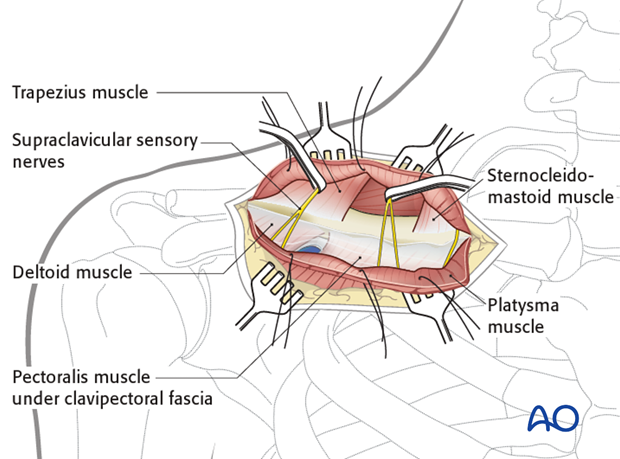
2. Anatomy
The clavicle is an S-shaped bone, anteriorly concave laterally and anteriorly convex medially. The cross sectional anatomy along its lateral to medial course changes from flat to tubular to prismatic. The junction from the flat region to the tubular region is a stress riser and this explains the higher incidence of midshaft fractures. Commonly, plates are applied to the superior and/or anterior surface of the clavicle.
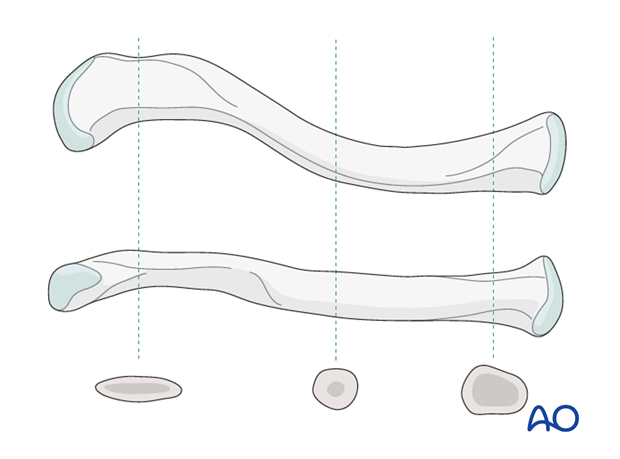
The neurovascular structures, namely, the subclavian artery and vein and the brachial plexus, pass from a posterosuperior to antero inferior direction, between the first rib and the clavicle at the junction of its medial and middle thirds and are thus vulnerable during surgery and instrumentation in this region. In the middle third or the tubular portion, the subclavius muscle and fascia protect the neurovascular structures from the fracture. However, to avoid injury to the neurovascular structures, care should be exercised when sharp instruments are used in this area.
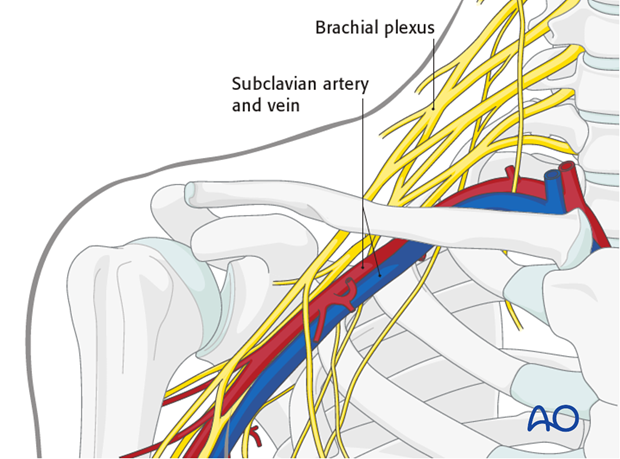
The sternocleidomastoid muscle, which inserts on the medial third of the clavicle, is not the main deforming force. The medial third of the clavicle stays in place, but the lateral 2/3 and the shoulder girdle displace downwards, inwards and forwards due to gravity. Pushing of the shoulder upward helps to reduce the lateral fragment to the medial fragment.
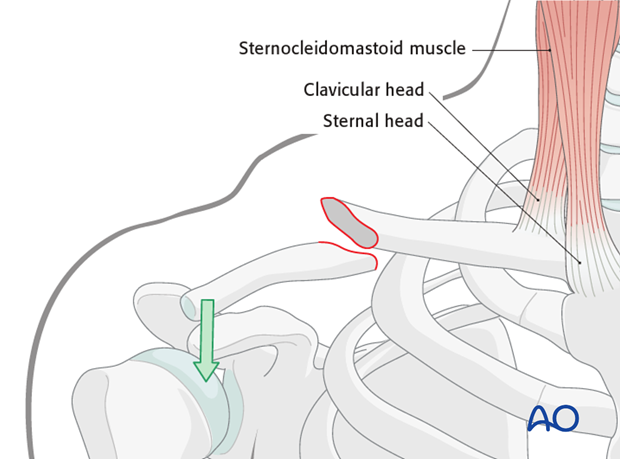
There are numerous ligamentous attachments to the clavicle. The coracoclavicular and acromioclavicular ligaments have a dominant role in maintaining the attachment of the clavicle to the upper extremity.
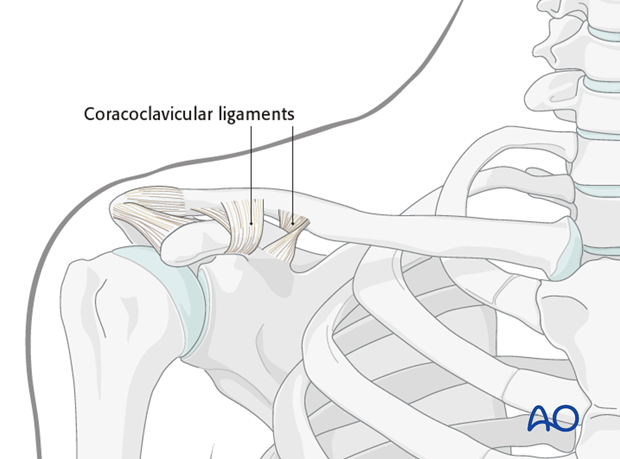
3. Skin incisions
An oblique 8-10 cm incision is made just inferiorly to the clavicle centered over the fracture site. In fractures of the medial third, the incision may be curved as required depending on chosen fixation.
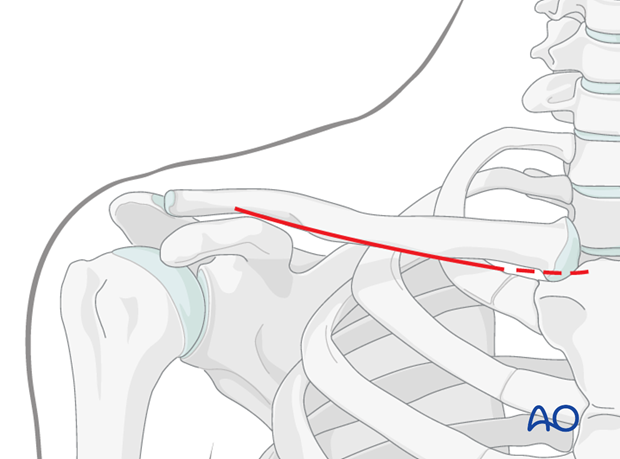
The platysma is incised transversely and tagged with sutures.
Identify the supraclavicular nerves and make every effort to preserve them. Next incise the clavipectoral fascia. This will expose the underlying clavicle and the attached pectoralis major anteriorly, and trapezius posteriorly.
Minimal soft tissue dissection of underlying clavipectoral fascia is performed to expose the fracture. This can be performed bluntly with a periosteal elevator or sharply with a blade.
Care must be taken to preserve soft tissue attachments to all bone fragments to enable proper bone healing.

4. Closure
After copious irrigation of the wound the fascia and subcutaneous tissues are closed in layers.
Make sure that the clavipectoral fascia is closed so as to cover the underlying plate and optimize healing.
Take great to care to oppose the layers of the platysma exactly as previously cut so that no deformity of the overlying skin occurs.
Pearl: Incorporating the cut and elevated underlying periosteum with the fascia repair will help to reduce dehiscence and strengthen closure of the fascia.
Oppose the skin with great care and avoid tension so as to end up with minimal scarring and deformity.
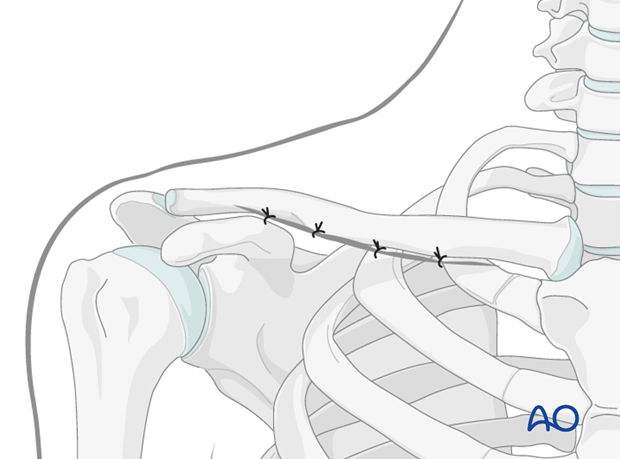
Pearl: Incorporating the cut and elevated underlying periosteum with the fascia repair will help to reduce dehiscence and strengthen closure of the fascia.














